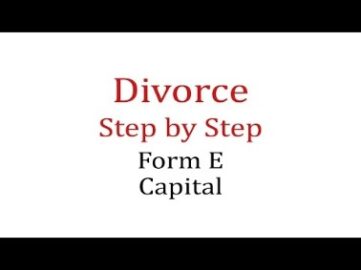
It involves determining the highest and lowest levels of activity and comparing the overall expenditures at each level. The high-low method is an accounting technique used to separate out fixed employee benefits and variable costs in a limited set of data. Using the High-Low technique has allowed us to prove that the original costs were actually semi-variable rather than just deduce that conclusion.
Two things that you would need to know are the amount of your fixed costs and variable costs to operate your business. Specifically, you should also be able to estimate your costs at different levels (quantities) of production. This cost includes a fixed charge and a variable element (fixed cost + variable element). The company wants to know the rate at which its electricity cost changes when the number of machine hours change. The part of the electric bill that does not change with the number of machine hours is known as the fixed cost.
- The part of the electric bill that does not change with the number of machine hours is known as the fixed cost.
- A manager that chooses to apply this method must have a full awareness of these limitations.
- After a certain level of production, a firm requires more fixed investments, which cannot be covered by this method; therefore, this method should be used with extreme caution.
Furthermore, while the technique is simple, the high-low method is not deemed dependable because it ignores all data save the two extremes. The table below depicts a company’s overall cost for various production levels during the first six months of the year. It can be calculated by subtracting the present realizable salvage value from the book value. For example, buying 2,000 shares of company A at $10 a share, for instance, represents a sunk cost of $20,000. Cost behavior describes how costs change as a result of changes in business activities. For example, the electricity cost for a firm will increase when working hours are increased.
Example of High-Low Method
For estimating the cost parts of the entire cost, the management can employ a method known as the high-low method. ABC International produces 10,000 green widgets in June at a cost of $50,000, and 5,000 green widgets in July at a cost of $35,000. There was an incremental change between the two periods of $15,000 and 5,000 units, so the variable cost per unit during July must be $15,000 divided by 5,000 units, or $3 per unit. Since we have established that $15,000 of the costs incurred in July were variable, this means that the remaining $20,000 of costs were fixed.
Adaptive metrics for an evolving pandemic: A dynamic approach to … – pnas.org
Adaptive metrics for an evolving pandemic: A dynamic approach to ….
Posted: Tue, 01 Aug 2023 18:08:33 GMT [source]
Hence, it is important for managers to understand what is the high-low method. In cost accounting, the high-low method is a method that attempts splitting mixed costs into fixed costs and variable costs. For mixed costs, that are also called semi-variable cost, they refer to costs that have a mixture of fixed and variable components. For instance, utilities, such as electricity, are considered as mixed costs.
Semi-variable cost
Similar to management accounting, cost accounting is the process of allocating costs to cost items, which often comprise a business’s products, services, and other activities. Cost accounting is useful because it can show where a company spends money, how much it earns, and where it loses money. Divide the numerator by the denominator to get an estimated cost of $1.23 per unit. The high-low method involves three main steps to calculate the cost for any level of production. Variable costs are expenses that change depending on the quantity of production or number of units sold.

Cost management allows us to forecast future expenses and plan accordingly. It also aids in the control of project costs and the pre-determination of maintenance costs. We can examine long-term company trends and achieve the business goals with proper cost management. Management accounting involves decision-making, planning, coordinating, controlling, communicating, and motivating.
High-low method example
Regression analysis is also best done with a spreadsheet or statistics tool. Regression analysis also aids in cost forecasting by analyzing the influence of one predictive variable on another value or criterion. There are other methods, such as the analytical approach and the scatter graph method, but the high-low method is considered the most convenient. However, to identify these costs, we need to observe the cost behaviors strongly. Relevant/ Irrelevant costs – These are also known as avoidable and unavoidable costs. Avoidable costs are the ones that are affected by the decision of a manager, whereas unavoidable costs are costs that are not affected by the decision of managers.

Hence, when we deduct USD 45,000 in USD 55,000, the fixed cost is net and the variable cost to the extent of equality in the level of production is eliminated. In other words, as fixed cost is the same in both months, the fixed cost has been eliminated by deduction. Consider the total production cost of February was USD 45,000 and the number of units produced was 10,000. Similarly, the cost of production was USD, 55,000 and the number of units produced was 14,000. Multiply the variable cost per unit (step 2) by the number of units expected to be produced in May to work out the total variable cost for the month. The costs related to a product, product batch, machinery, shop, geographic sales region, or subsidiary involve variable and fixed costs.
High-Low Method of Accounting
Management accountants work for public companies, private companies, and government offices. Their role is to collect, observe, and record numbers; advise on the company’s investments and manage them; budgeting, planning, risk management, and decision-making. Used in the field of management accounting, which is an essential part of accounting. One of the activities is expected to be higher with higher cost, and another is expected to be lower with lower cost. If you’re interested in finding out more about fixed overhead volume variance, then get in touch with the financial experts at GoCardless. Find out how GoCardless can help you with ad hoc payments or recurring payments.
- It is critical to understand the high-low method since it is commonly employed in the formulation of corporate budgets.
- More reading between cost and activity, which may be an oversimplification of cost behavior.
- So the highest activity happened in the month of Jun, and the lowest was in the month of March.
- Due to these defects, this method is considered less accurate than the least squares regression method which takes into account all data points and provides much more accurate results.
- The high-low method is relatively unreliable because it only takes two extreme activity levels into consideration.
The method makes use of two different levels of activities and related costs. The high-low method is a simple technique for determining the variable cost rate and the amount of fixed costs that are part of what’s referred to as a mixed cost or semivariable cost. Lets say that you started a business producing waterproof cell phone cases for retail sales.
This method has disadvantages in that it fits a straight line to any set of cost data, regardless of how unpredictable the cost behavior pattern is. Furthermore, unless you have access to a computer, computations necessitated by the least squares approach are tedious and time-consuming. Semi-Variable Cost – These expenses are not constant in total or per unit.
A cost that contains both fixed and variable costs is considered a mixed cost. The high-low method separates fixed and variable costs from the total cost by analyzing the costs at the highest and lowest levels of activity. It compares the highest level of activity and the lowest level of training and then compares costs at each level. Difference between highest and lowest activity units and their corresponding costs are used to calculate the variable cost per unit using the formula given above.
Variable Cost vs. Fixed Cost
It enables identifying the cost structure of a given product, which enables estimating the cost of production given a level of output. If the variable cost is a fixed charge per unit and fixed costs remain the same, it is possible to determine the fixed and variable costs by solving the system of equations. Continuing with this example, if the total electricity cost was $18,000 when there were 120,000 MHs, the variable portion is assumed to have been $12,000 (120,000 MHs times $0.10).

A business organization might be paying $500 monthly just to keep the light and buildings operating at minimal level. However, if the production level increases, the electricity bill will be higher than the minimum subscription fee. For fixed costs, they refer to the costs that remain the same regardless the output level.
Social media mistakes that are costing you the job
Some common examples of these costs are supervision costs and marketing costs. It is commonly practiced to assist managers in making crucial business decisions, as it provides them with actual statistics and critical data that help with decisions. A cost is an expense needed to sell, create or acquire assets for a product or service. In other words, it is the monetary value of expenditure for supplies, services, etc. For example, if the cost of a liter of milk is $2, the consumer has to spend $2 to acquire a liter of milk.
Variation in the total costs is the variable cost rate about the variation in the number of units produced or manufactured. The high-low method is used to calculate the variable and fixed cost of a product or entity with mixed costs. It considers the total dollars of the mixed costs at the highest volume of activity and the total dollars of the mixed costs at the lowest volume of activity. The total amount of fixed costs is assumed to be the same at both points of activity. The change in the total costs is thus the variable cost rate times the change in the number of units of activity. Companies usually want to understand the cost structure of the products they manufacture.









